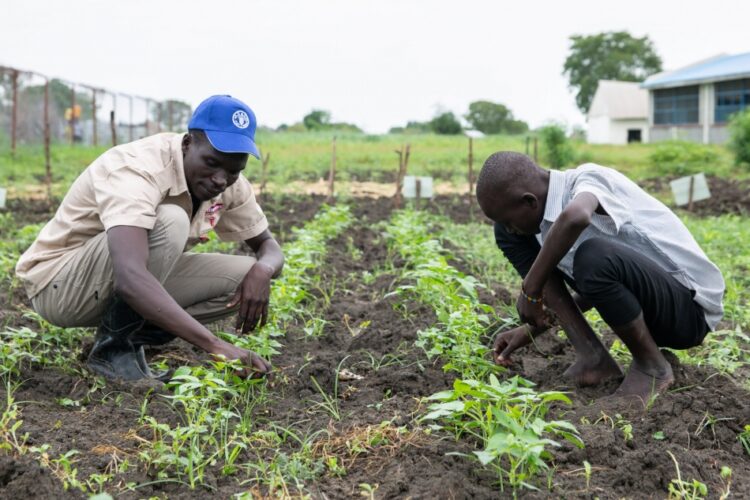How FAO projects are encouraging youth to embrace technology and take the lead in the fight against climate change
Climate change is intensifying rural poverty and food insecurity, driving people away from farming communities and changing their way of life.
So what can we do about it?
Young people are often more willing to adopt new practices and take risks. They can act as a bridge between traditional farming techniques and new technologies, helping to shift food and agriculture systems towards ones that are more sustainable and ready to beat climate change.
For this to happen, FAO believes strongly that innovation is key. Young people’s enthusiasm for new technology and interest in trying innovative approaches to traditional farming has real potential for change. It signifies a modern approach that will create decent employment opportunities in agribusiness, while making rural areas more resilient to climate change. This new era is an opportunity for youth to pour their energy and enthusiasm into transforming the way we grow food and protect our environment.
Here are two places in Africa in which FAO initiatives are helping young people to do just that.
Boosting rural youth employment with FAO training in Tanzania and Uganda
In Zanzibar, rural areas have already felt the impacts of climate change. Its coastline and coastal vegetation have been receding, increasing young people’s doubts about pursuing a career in agriculture.
To counter this, FAO provided training sessions for young people using Junior Farmer Field and Life Schools (JFFLS) methodology, training them on modern agribusiness methods and integrating a climate perspective into investment. This included supporting youth-led micro, small and medium enterprises in the agribusiness and marketing sectors and teaching technical and business skills adapted to rural people’s needs.
Those who received FAO training went on to train another 150 peers in the district, who then trained a further 20 each, opening up the agriculture sector to more young people within their communities.
In Uganda, FAO focused their training on another important area: fisheries and aquaculture. There, young people were specifically trained in the construction and management of fish production systems including ponds, cages and hatcheries. FAO also provided training and inputs, namely fish fingerlings and feeds, to youth groups that were involved in table fish production. This resulted in increased productivity of fish farming and better income– generating opportunities for youth in pond construction and cage making – showing young people in the area how they can benefit from rural industries like these.
Youth Inspiring Youth in Uganda
Introducing rural youth to new agricultural methods is the first step, but they also need to be offered the opportunity to put their own ideas into action. In 2017, FAO collaborated with Ministry of Agriculture, Animal Industry and Fisheries in the Youth Inspiring Youth in Agriculture initiative in Uganda, with the aim of finding young people with cutting-edge innovations in agriculture value chains, supporting their businesses and encouraging them to act as role models in their communities.
Twenty-five young people were selected across the country for their ideas and received a variety of capacity building trainings including occupational safety and health, strategic planning and business writing – the kind of education needed to help them take their innovative practices and entrepreneurship to the next level. They were also paired with agribusiness mentors to help them understand and navigate agribusiness services such as agro-inputs, funding and market opportunities. Youth are in a unique position to ensure that agriculture has a viable, sustainable future, and initiatives like these help them take advantage of it.
Young people are powerful agents for change and play a vital role in achieving the Sustainable Development Goals (SDGs), especially SDG13 (Climate Action) by 2030. Today’s youth will become the community leaders, policy makers and innovators that will determine our planet’s future. Initiatives like these help thousands of young people make sure their communities are resilient to the impacts of climate change and change the world for the better.
Learn More
- FAO Website: Rural youth: protecting the climate through innovation
- Publication: Youth in motion for climate action!
- Website: FAO in Tanzania
- Website: FAO in Uganda

